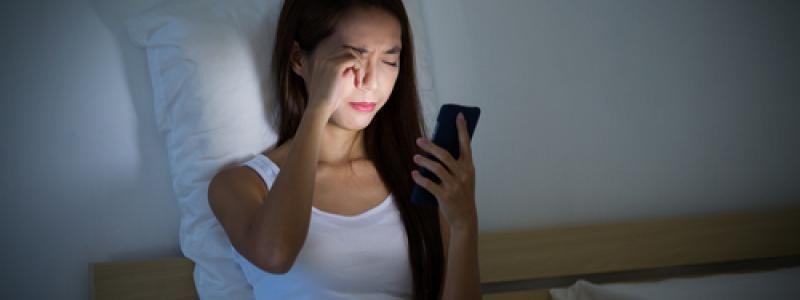Smartphones Should Have “Bedtime Mode” To Help Mobile Users Sleep Better, Per Experts

No doubt, everybody is familiar with this scenario -- you are just about ready to go to sleep at 10-ish, but steal a quick glance at your smartphone while in bed, and then end up staying awake until 3 in the morning, still tapping those like buttons. Of course, mobile users are quick to blame their smartphones for their disrupted sleeping cycles, but it is most unfortunate that while just about everybody knows that smartphones do not help us get enough sleep, we still go on and browse our handsets in our pajamas. Common sense dictates that the best solution would probably be to turn off our mobile devices when getting a needed shuteye. But considering human beings are very hard headed creatures sometimes, experts are proposing instead that phone makers incorporate an automatic “bedtime mode” to help people achieve a healthy number of hours of sleep every night.
After conducting a study that looked into the light emissions of smartphones, tablets and backlit e-reader devices, Paul Gringras, a professor at Evelina London Children’s Sleep Medicine and King’s College London, and his research team found that today’s display screens emit a blue-ish light that affects melatonin, the hormone that helps regulate sleep patterns. Apparently, these blue-ish lights make people more alert instead of sleepy, and as the display screens of most mobile devices today get brighter with higher resolution, the blue-ish lights intensify, further hindering people from falling asleep during bedtime hours.
During Gringras’ first test, volunteers were provided with glasses tinted with orange (which can block out the blue-ish lights), while on the second test, users were given a mobile app designed to used at night time, shifting its color palette accordingly. The two tests appear to be effective, but going to sleep with orange glasses may not feel comfy for most people.
This is why experts are looking for a more practical solution, even suggesting that the smartphones themselves be installed with a software that masks the handsets’ blue-ish lights at night time. Interestingly, solutions like F.lux already do this, but its creators encountered resistance when they launched a mobile app for iOS -- Apple pulled it a few days later for violating its developer agreement.
Again, its probably cheaper to just urge mobile users to not bring their smartphones and tablets to bed at night time. But in an increasingly mobile dependent world, this is an almost impossible task, especially when it comes teenagers and young adults always engaged in social media. The solution now lies with the phone makers themselves, but the question is: will they be willing to give it a try?
Related Blog Articles
- Here Comes Work Chat: Facebook At Work’s Own Chat Messaging Platform
- Opera Max Announces New Feature That Lets Android Users Save Data When Streaming Music
- Google Planning To Donate $1 Million To Education Via Android Pay Charity Drive
- AT&T Planning To Increase Price Of Grandfathered Unlimited Data Plan Next Year
- Big Four Wireless Carriers Finish Bottom In Consumer Reports’ Satisfaction Ratings
- Samsung, Apple Finally Settles On Amount Of Cash Owed Over Patent Case
- Apple Had A Pretty Good (And Busy) Year
- The Road To 5G: A Realistic Look
- FCC Back In Court To Defend Its Net Neutrality Rules Anew
- War Over Internet Of Things Heats Up With New Players Looking To Challenge Verizon, AT&T
Related Blog Posts
- Report: Drug users are using wearable devices during binges
- Spotify allows Android users to reorder playlists; Pandora lets users share tunes to Snapchat Stories
- WhatsApp combats fake news with a new forwarded label
- FCC: Today’s improving mobile networks can impact healthcare costs
- Did Apple Music already overtake Spotify in America?


 Menu
Menu